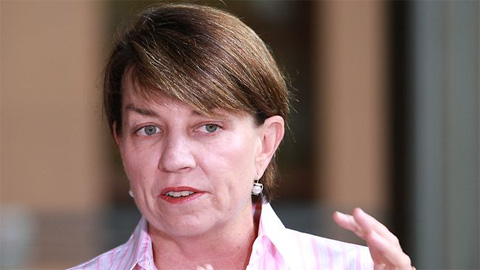
AUSTRALIA’S hopes to lead the world in generating “clean” electricity from coal have taken a hammering.
A massive cost blowout forced the Queensland government to scrap a prototype power plant that was to be in action by 2015.
The decision to go back to the drawing board on the ZeroGen project in central Queensland means carbon capture technology to trap greenhouse gases produced from coal-fired plants will not be in use for a decade at least.
While Premier Anna Bligh said yesterday the $192 million invested in ZeroGen had not been wasted, and the state and federal governments remained committed to developing clean coal processes, she admitted this was not yet economically viable.
A feasibility study on the ZeroGen proposal to capture carbon dioxide emissions and store them underground found the cost would have burst through the $4.3 billion budget and driven up power prices to unaffordable levels. The state government would not pursue “at this time the proposal to fund an Integrated Gasification Combined Cycle power station incorporating carbon capture and storage,” Ms Bligh said. “What the research shows us is that this technology works,” she told reporters.
“What it also shows us . . . is that it is not yet economically viable.
“Frankly, it would drive up the cost of electricity beyond the reach of normal people.”
ZeroGen was the most advanced of four “flagship” projects funded jointly by the federal government, the states and the coal industry to produce clean electricity from a station integrated with carbon capture and storage.
Construction of a fully-fledged 530 megawatt power station, with 90 per cent emission capture, was to have begun in 2012 under the fast-tracked timeline. The ZeroGen plant was to have been in operation by 2015, making it the first in the world.
But Ms Bligh said the location of the plant, originally proposed for a corner of the Surat coal basin in central Queensland, west of the industrial centre of Gladstone, had emerged as the key stumbling block. “You need it to be geologically sound, you need it to be as close as possible to the source of the energy, the coal, and you need it wherever possible to be quite close to transmission so you can get the whole system working in a way that is economically viable and cost effective,” she said.
“We haven’t found that yet in Queensland.”
The Australian understands the state government baulked after the original $4.3bn cost of the project blew out by more than half. Ms Bligh refused to put a figure on it, citing commercial confidentiality.
The federal government initially reacted sharply, with Resources Minister Martin Ferguson quoted as telling Brisbane’s Sunday Mail that Queensland “cannot have its cake and eat it too” by profiting from coalmining but not investing in research to reduce climate change emissions.
Both Mr Ferguson and Climate Change Minister Greg Combet declined to elaborate yesterday.
But Ms Bligh, after speaking to Mr Ferguson, said that both governments were committed to developing carbon capture and storage technology as a hedge against climate change for Australia’s $55bn coal industry.
ZeroGen would now be folded into an independent body, owned and operated by the coal industry. Mr Hillman said the decision to put the brakes on the ZeroGen plant was sensible, but the effect would be to postpone the development of a clean power station by at least five years.
Source: www.theaustralian.com.au






